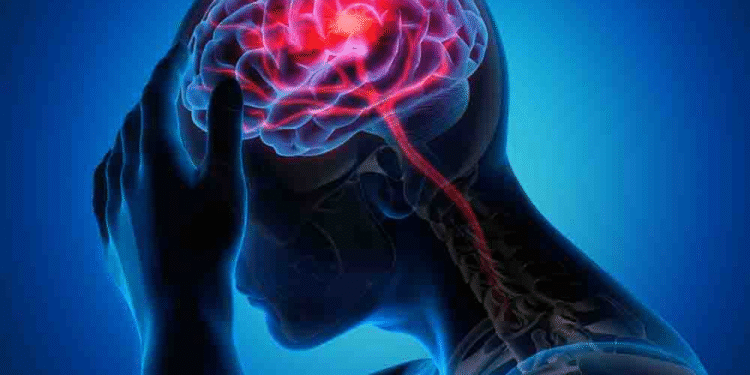Headache specialists have puzzled over why some patients respond beautifully to treatments while others continue suffering despite trying everything. Recent findings point to an unexpected answer hiding in the digestive system. The relationship between leaky gut and migraines challenges traditional thinking about headache causes and opens doors to more effective treatments.
Your Gut’s Protective Shield Gone Wrong
The intestinal lining works like a bouncer at an exclusive club – letting VIPs through while keeping troublemakers out. This selective barrier spans roughly the size of a tennis court when flattened, making it one of the body’s largest interfaces with the outside world.
Normal intestinal cells fit together like puzzle pieces, connected by protein structures called tight junctions. These microscopic locks control exactly what passes from gut contents into bloodstream. When everything works properly, nutrients get absorbed while toxins stay trapped inside the intestinal tube.
Problems start when this system breaks down. Stress hormones loosen the tight junctions. Certain medications punch holes in the barrier. Processed foods containing industrial chemicals gradually wear away the protective lining. Even excessive exercise can temporarily increase intestinal permeability.
Once compromised, the gut becomes like a screen door with torn mesh. Bacterial fragments, undigested proteins, and inflammatory compounds slip through into circulation. The immune system recognizes these escaped substances as invaders and launches defensive attacks that spread throughout the body.
The Brain Gets Caught in the Crossfire
Inflammation Spreads Upward
When gut contents leak into bloodstream, immune cells release chemical alarm signals called cytokines. These inflammatory messengers travel everywhere blood flows, including across the blood-brain barrier. Brain tissue responds to these signals by becoming inflamed, creating perfect conditions for migraine attacks.
Brain scans reveal increased inflammation in migraine sufferers between headache episodes. The same inflammatory markers appear elevated in people with intestinal permeability problems. This suggests both conditions share common inflammatory pathways that feed off each other.
Research shows that blocking certain inflammatory signals can prevent both gut barrier breakdown and migraine attacks. This dual effect supports the idea that leaky gut and migraines represent different expressions of the same underlying inflammatory process.
Gut Bacteria Influence Brain Function
Trillions of bacteria living in the digestive tract produce chemicals that directly affect brain function. Beneficial bacteria manufacture calming neurotransmitters like GABA, while harmful bacteria release toxins that promote inflammation and pain sensitivity.
When the bacterial ecosystem becomes unbalanced, neurotransmitter production shifts dramatically. Serotonin levels often drop, reducing the brain’s natural pain-fighting ability. Stress hormones increase, making nerve cells more reactive to triggers. This creates a neurochemical environment where migraines develop more easily and last longer.
The vagus nerve creates a direct communication highway between gut and brain. Inflammatory signals from damaged intestines travel along this nerve pathway, potentially triggering migraine episodes within hours of gut irritation.
Common Culprits Behind Both Problems
Several factors damage intestinal barriers while simultaneously increasing migraine risk:
- Chronic stress elevates cortisol, which weakens gut junctions and increases headache sensitivity
- Processed foods containing emulsifiers directly damage intestinal lining while triggering inflammatory responses
- Antibiotic overuse kills protective bacteria, allowing harmful organisms to proliferate and increase toxin production
- Poor sleep disrupts gut repair mechanisms while lowering migraine thresholds
- Excessive alcohol consumption rapidly increases intestinal permeability and acts as a direct headache trigger
Understanding these shared triggers helps explain why migraine patients often struggle with digestive issues. Addressing root causes frequently improves both conditions simultaneously, sometimes more effectively than treating each problem separately.
Healing Through Food and Nutrition
Strategic Food Elimination
A well-designed leaky gut diet plan removes inflammatory triggers while providing gut-healing nutrients. Most protocols begin by eliminating gluten, dairy, sugar, and processed foods for 4-8 weeks. This gives damaged intestinal tissue time to repair itself without constant irritation.
Many patients notice migraine improvements within the first few weeks of dietary changes. Some report fewer headaches, while others find their migraines become less severe or shorter in duration. These improvements often occur before digestive symptoms resolve, suggesting that reducing gut inflammation quickly benefits the nervous system.
Food reintroduction happens systematically after the elimination phase. Patients test one food group at a time, watching for both digestive and neurological reactions. This process helps identify personal triggers that may have been causing problems for years without obvious connections.
Gut-Rebuilding Nutrition
Certain foods actively repair intestinal damage while reducing migraine risk. Bone broth provides collagen and amino acids that rebuild tight junctions. Fermented vegetables supply beneficial bacteria that restore healthy gut ecology. These traditional foods work better than many supplements because they provide nutrients in natural, easily absorbed forms.
Anti-inflammatory foods serve double duty by healing gut tissue and calming overactive nerve cells. Fatty fish provides omega-3s that reduce both intestinal and brain inflammation. Leafy greens supply magnesium, which many migraine sufferers lack. Ginger offers compounds that soothe digestive upset while blocking pain pathways in the nervous system.
Supplement Strategies That Work
Foundation Supplements
The best supplements for leaky gut often benefit migraine sufferers through multiple mechanisms. L-glutamine feeds intestinal repair cells while supporting neurotransmitter production. Zinc heals damaged gut lining and participates in over 300 enzymatic reactions throughout the body.
Probiotics represent perhaps the most important intervention for addressing both conditions. Specific bacterial strains produce neurotransmitters, reduce inflammation, and strengthen intestinal barriers. Research shows that certain probiotics can reduce migraine frequency as effectively as some prescription medications.
Digestive enzymes help break down foods completely, reducing the antigenic load that triggers immune reactions. Many migraine patients have low stomach acid production, which impairs protein digestion and mineral absorption. Supporting digestive function often improves both gut health and neurological symptoms.
Targeted Migraine-Gut Support
Several nutrients specifically address the connection between digestive and neurological health. Magnesium glycinate supports both smooth muscle function in the gut and nerve stability in the brain. Riboflavin improves cellular energy production in both tissues.
Alpha-lipoic acid provides antioxidant protection that benefits inflamed gut tissue while supporting mitochondrial function in brain cells. Coenzyme Q10 enhances energy production throughout the body, potentially reducing both digestive dysfunction and neurological symptoms.
Professional Assessment and Treatment
Comprehensive Testing Approaches
A qualified leaky gut doctor typically orders specialized tests that reveal connections between digestive and neurological symptoms. Lactulose-mannitol testing directly measures intestinal permeability by comparing absorption rates of two different sugars. Comprehensive stool analysis shows bacterial imbalances, inflammatory markers, and digestive function problems.
Food sensitivity testing helps identify triggers that contribute to both gut inflammation and migraine attacks. Unlike immediate allergic reactions, these delayed sensitivities can cause symptoms hours or days after eating problem foods. Many patients discover that seemingly healthy foods have been contributing to their chronic symptoms.
Organic acid testing reveals metabolic byproducts that indicate bacterial overgrowth, nutrient deficiencies, and detoxification problems. This comprehensive assessment provides insights that standard medical tests often miss.
Treatment Protocols That Address Both Conditions
Successful practitioners develop treatment plans that simultaneously address gut healing and migraine prevention. These protocols typically combine dietary modifications with targeted supplements, stress management techniques, and lifestyle interventions.
Treatment phases usually follow a logical sequence. Initial efforts focus on removing triggers and calming inflammation. Middle phases emphasize healing damaged tissue and restoring healthy function. Final phases concentrate on maintaining improvements and preventing recurrence.
The following strategies support long-term success:
- Maintaining dietary modifications that support gut health and reduce migraine triggers
- Continuing probiotic supplementation to preserve healthy bacterial balance
- Managing stress through techniques that protect both digestive and neurological function
- Getting adequate sleep to support tissue repair and reduce headache susceptibility
- Regular follow-up with healthcare providers to monitor progress and adjust treatments
Progress tracking helps patients stay motivated during the healing process. Symptom diaries reveal patterns and improvements that might otherwise go unnoticed. Follow-up testing can document objective improvements in gut function and inflammatory markers.
For migraine sufferers who haven’t found relief through conventional treatments, exploring the connection between leaky gut and migraines offers genuine hope. This approach addresses underlying causes rather than simply managing symptoms, potentially providing lasting improvements for those willing to commit to comprehensive healing protocols.













